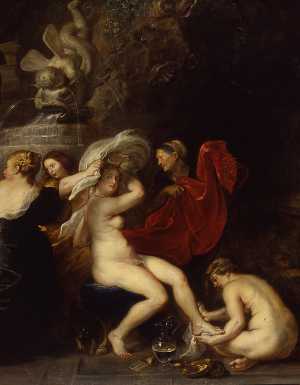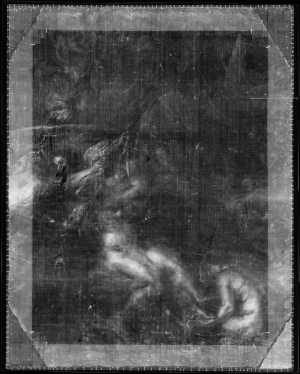Specifications
| Title | The bath of Diana |
|---|---|
| Material and technique | Oil on canvas |
| Object type |
Painting
> Painting
> Two-dimensional object
> Art object
|
| Location | This object is in storage |
| Dimensions |
Width 120 cm Height 152,5 cm |
|---|---|
| Artists |
Painter:
Peter Paul Rubens
|
| Accession number | 2296 (OK) |
| Credits | Loan Cultural Heritage Agency of the Netherlands (former Koenigs collection), 1948 |
| Department | Old Masters |
| Acquisition date | 1948 |
| Creation date | in 1635 - 1640 |
| External exhibitions |
Rubens - Poussin, influences croisées (2010) In het spoor van Rubens (2009) Zoet&Zout (2012) Behind the Curtain. Concealment and Revelation since the Renaissance (2016) |
| Research |
Show research Alma |
| Material | |
| Object | |
| Geographical origin | Southern Netherlands > The Netherlands > Western Europe > Europe |

























